Pulp Bits: A Roundup of Washtenaw County Arts & Culture Stories, Songs & Videos

A round-up of arts and culture stories featuring people, places, and things in Washtenaw County, whether they're just passing through or Townies for life. Coverage includes music, visual art, film & video, theater & dance, written word, and Pulp life (food, fairs, and more). If you're reading this in the future and a story link is dead, look up the URL on web.archive.org; we've cached every post there.
Featuring a new mix of Ghostly music by Shigeto and Charles Trees to celebrate the Ann Arbor-launched label's 20th year, the NSFW debut video by Ypsi rap duo Guttatown, the EMU-graduates-made fantasy film "Pandora's Wish," and much more.
The Music of Life: “Fractured History: A Solo Exhibit by Aaron Dworkin” at Ann Arbor Art Center
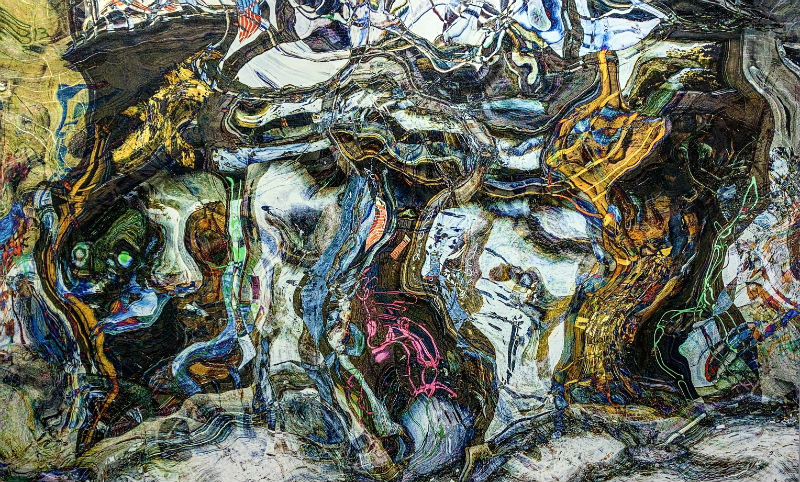
Aaron Dworkin's Fractured History exhibition is art in the key of life. His 11 artworks in the Ann Arbor Art Center’s entry-level gallery gives us a revealing glimpse of this authentic Michigan institution as well as his view of the world around us.
It would be a step too far to say the display is autobiographical. Dworkin is a bit too cagey to be revealed in his art, but his choice of themes and topics in Fractured History compensate for the otherwise lack of biographical detail.
After all, this a man who has already had enough rarefied experiences to fill a handful of lifetimes.
Living While Black: Theatre Nova’s production of James Ijames' “Kill Move Paradise” is powerful

The list is long, much too long.
Sometimes it seems like every few days a black American is gunned down by a police officer. They are often unarmed, unthreatening and involved in confrontations with the police that should have never escalated into deadly violence.
Sometimes the police officers involved go to jail, many times they don’t.
This tragic story of two American cultures in deadly conflict is the theme of James Ijames' play Kill Move Paradise, being presented in Michigan for the first time by Theatre Nova.
In a burst of blinding light, gunshots, and the cacophony of urban noise, a man is thrust on to a stage, a bare closed room from which he can not escape. It’s a sort of limbo, where he waits for a judgment about what it was that brought him here. He is a fatal victim of police violence. He is in turn followed by three other black men into this limbo. As one victim says, it reminds him of an episode of the old Twilight Zone TV show.
And they are in a show because the audience is visible to the four men. They comment on the audience and come to believe that the audience will decide their fate. In this case, and Ijames must have thought in most cases, the audience at Theatre Nova’s opening night was primarily white.
This message is for them.
Redbud Productions takes on the power of family in the Michigan premiere of "The Herd"
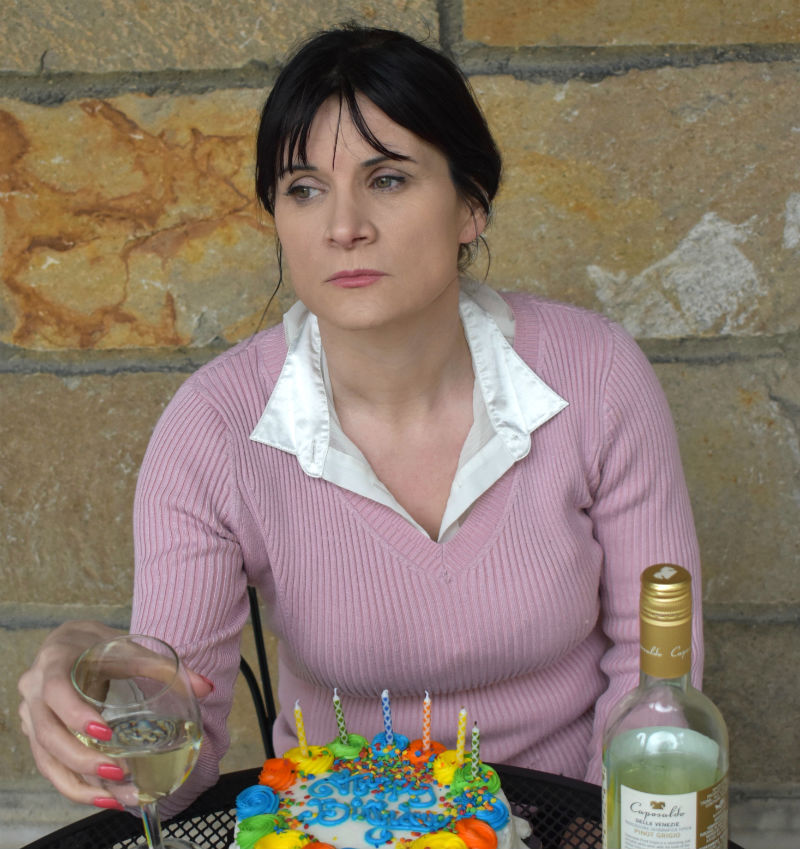
Redbud Productions explores with humor and heart the dynamic of a family raising a child with special needs in The Herd by Rory Kinnear.
Mother Carol (Lisa Coveney) is anxiously putting together the perfect 21st birthday party for her son Andy, who is severely disabled and living in a care home. Also invited to the party are Carol’s parents, Patricia (Lenore Ferber) and Brian (Michael Haifleigh), and Carol’s adult daughter Claire (Katie Whitney), who takes this opportunity to introduce her new boyfriend Mark (Chris Krenz) to the family. Carol’s estranged husband Ian (Brian Hayes), who abandoned the family when Andy was a baby, also chooses to attend unannounced. In the words of producer Tim Grimes, “The intrusion does not go well.”
Now in its 20th year, Redbud Productions, offers acting classes for adults and high school students using the techniques of Sanford Meisner, which, among other things, focus on emotional work.
Musical Scrappers: Akropolis Reed Quintet's Together We Sound Festival showcases the group's penchant for outside-the-box collaborations

The Akropolis Reed Quintet's second annual Together We Sound Festival begins May 28 at Cass Tech High School in Detroit and continues in various spots in the city before moving to Ann Arbor on Friday, June 7, at Kerrytown Concert House (KCH). It concludes June 8 back in Detroit. Over the course of fest, Akropolis will also play two evening concerts in Detroit and Hamtramck, plus three lunchtime workplace concerts, six K-12 school presentations, a side-by-side student concert with an Akropolis concerto, and two pop-up events in public spaces. featuring world premieres by Akropolis in collaboration with local and national artists.
Founded in 2009, Akropolis members Matt Landry (saxophone), Kari Landry (clarinet), Tim Gocklin (oboe), Ryan Reynolds (bassoon), and Andrew Koeppe (bass clarinet) met when they were students at the University of Michigan. Since then the quintet has won numerous national awards, has premiered more than 50 reed quintet works, and has released three recordings. In 2014, Akropolis became the first-ever ensemble of its makeup to win the prestigious Fischoff Gold Medal chamber music award.
Akropolis will premiere a new work, Sprocket: A Scrap Metal Sextet, at the KCH concert, a collaboration combining the music of composer Steven Snowden, and a rideable percussion bicycle designed and built by Detroit metal artist and Kresge Arts fellow Juan Martinez. Percussionist Zac Brunell will join Akropolis and ride/play the tricycle which will make familiar and unusual sounds powered by the gears attached to the pedals.
I interviewed Landry, who is also Akropolis’ executive director, and Juan Martinez, the creator of the musical tricycle for Sprocket, via email to talk about the quintet's work, Together We Sound Festival, and commissioning new compositions.
Contemporary Collage: "Odds & Ends" at the Ann Arbor Art Center
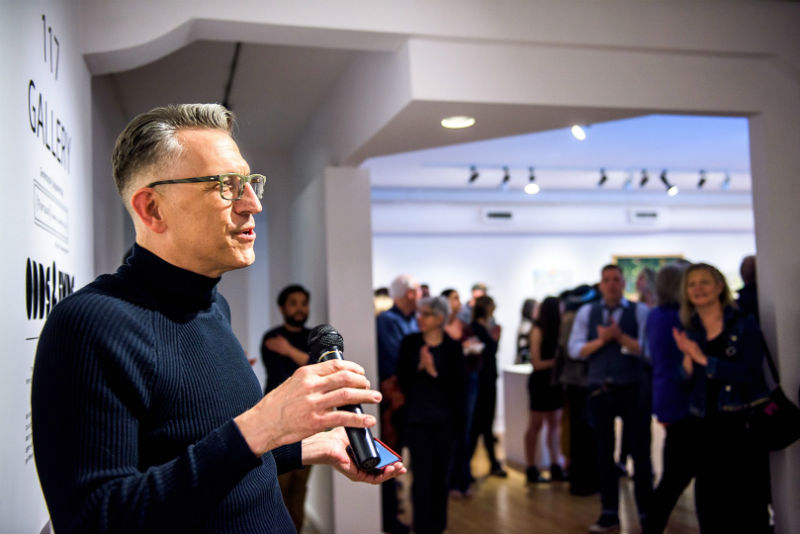
Ann Arbor Art Center’s latest juried exhibition centers on the art of collage. Aptly named Odds & Ends, the show brings together an array of works that represent contemporary artists’ engagement with the tradition. From mixed media to digital collage, Odds & Ends offers a diverse collection of accomplished works.
Ann Arbor artist John Gutoskey juried this exhibition. Gutoskey works as a designer, printmaker, and collector. He currently owns JG Studio and the A2 Print Studio in Ann Arbor. The Ann Arbor Art Center describes Gutoskey’s style of producing art and collecting by saying:
In the 1990s, John returned to his studio with a newfound interest in making art on his own terms, and it resulted in an outpouring of new work. Exploring the media of assemblage (through found objects), collage, printmaking, and installation, he was inspired by the works of Joseph Cornell, Betye Saar, Lucas Samaras, outsider art, Art Brut, and religious art to evolve his own unmistakable style: a perfect mirror for his gregarious, highly animated personality. The obsessive collector in Gutoskey met the trained visual artist half-way.
Gutoskey’s background in assemblage and collage is a perfect match for the content of this exhibition, which includes 2-D collage work, sculpture, mixed media works, and assemblage. Gutoskey selected winners for Best in Show, Second Place, Third Place, and three honorable mentions:
Arrested Motion: “Helen Gotlib: Secret Beaches” at WSG Gallery
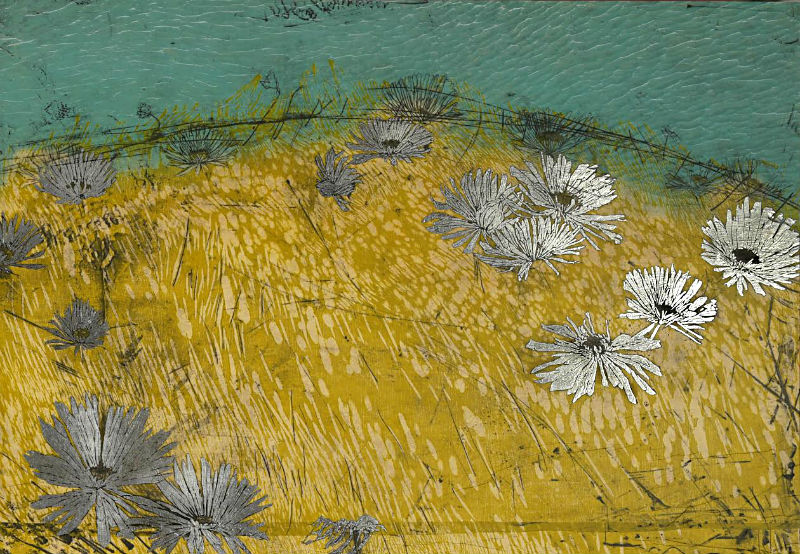
Ann Arbor printmaker Helen Gotlib is a master of the art of slow motion. It’s there in plain sight in her Secret Beaches exhibit at the WSG Gallery.
Gotlib’s vision of such arrested motion is an integral aspect of her mixed-media printmaking. It’s an intricate element of her work that follows apace in her handful of prints from composition to completion.
In large part, this suspended movement is due to the sheer complexity of Gotlib’s art. In any single artwork, there are combinations of woodblock printing, intaglio printing, acrylic paint, India ink and gold or palladium leaf on her carved birch panels.
As Gotlib says in her artist’s statement:
Pulp Bits: A Roundup of Washtenaw County Arts & Culture Stories, Songs & Videos

A round-up of arts and culture stories featuring people, places, and things in Washtenaw County, whether they're just passing through or Townies for life. Coverage includes music, visual art, film & video, theater & dance, written word, and Pulp life (food, fairs, and more).
Featuring new music by The Kelseys and Stef Chura, plus a short film about sleeping in various public spots in Ann Arbor at 5 am, and much more.
Paul Vachon's "Detroit: An Illustrated Timeline" explores three centuries of history

Detroit has lived under the flags of three countries, watched its fortunes soar with stove and automotive manufacturing and then crash back to earth with bankruptcy, and the city continues to evolve and change in myriad ways today.
Three centuries of this fascinating city’s history are explored in the new book by Paul Vachon, Detroit: An Illustrated Timeline.
“I always wanted to write,” the author says. “The Great Recession led to a job loss, which led to writing for trade publications and to my first book for Arcadia Publishing, called Forgotten Detroit.”
Since then, Vachon has published South Oakland County: Then & Now, Legendary Locals of Detroit, and Lost Restaurants of Detroit, as well as two guidebooks, MOON Michigan and MOON Michigan's Upper Peninsula. “History has been my passion in many ways,” he says. “And about two years ago Reedy Press approached me to do a timeline book about Detroit.”
The book is a chronological telling of events in Detroit, broken up into chapters that correspond to periods within the city’s history. “The subject matter ranges from military conquests to industry to individual people who shaped Detroit in some way," Vachon says. "The book examines political developments, business trends … all the way up to the bankruptcy.”
Rapid, Radical Change: "The World to Come: Art in the Age of the Anthropocene" at UMMA
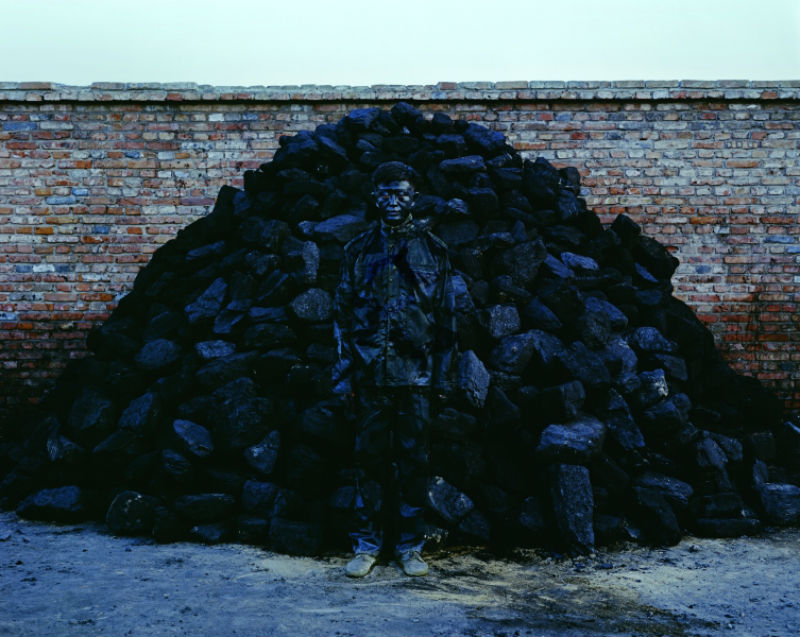
The day after I saw the University of Michigan Museum of Art’s current exhibit The World to Come: Art in the Age of the Anthropocene, I saw this headline on the front page of The New York Times: "Report Details Global Shrink in Biodiversity." It was accompanied by images of bleached coral and strangled sea turtles. On the same page, I saw a picture of Lady Gaga in black lingerie on the steps of the Metropolitan Museum of Art, vamping for the cameras on the occasion of the annual Met Gala.
I like to think I would have been shocked by this juxtaposition of the catastrophic and the trivial before I saw the exhibit, but I’m not sure. We live in an age of distraction and it’s easy for us humans -- famous for our short attention spans -- to lose sight of the enormous challenge posed by global warming. The World to Come makes the point, devastatingly, incontrovertibly, unforgettably, that we live in an era of rapid, radical, and irrevocable ecological change.
The show, curated by Kerry Oliver-Smith of the Harn Museum of Art at the University of Florida, hits you right between the eyes with images of humanity’s effect on the natural environment -- and it keeps on hitting. Sections of the show are broken down into categories such as "Deluge," "Consumption," "Extinction," "Imaginary Futures," and the like, categorizing the environmental outrages to make the enormity of the subject (and the size of the show) comprehensible.
It’s ironic that an exhibit devoted to destruction and climate disaster should be so very beautiful but ... well, there it is.


































